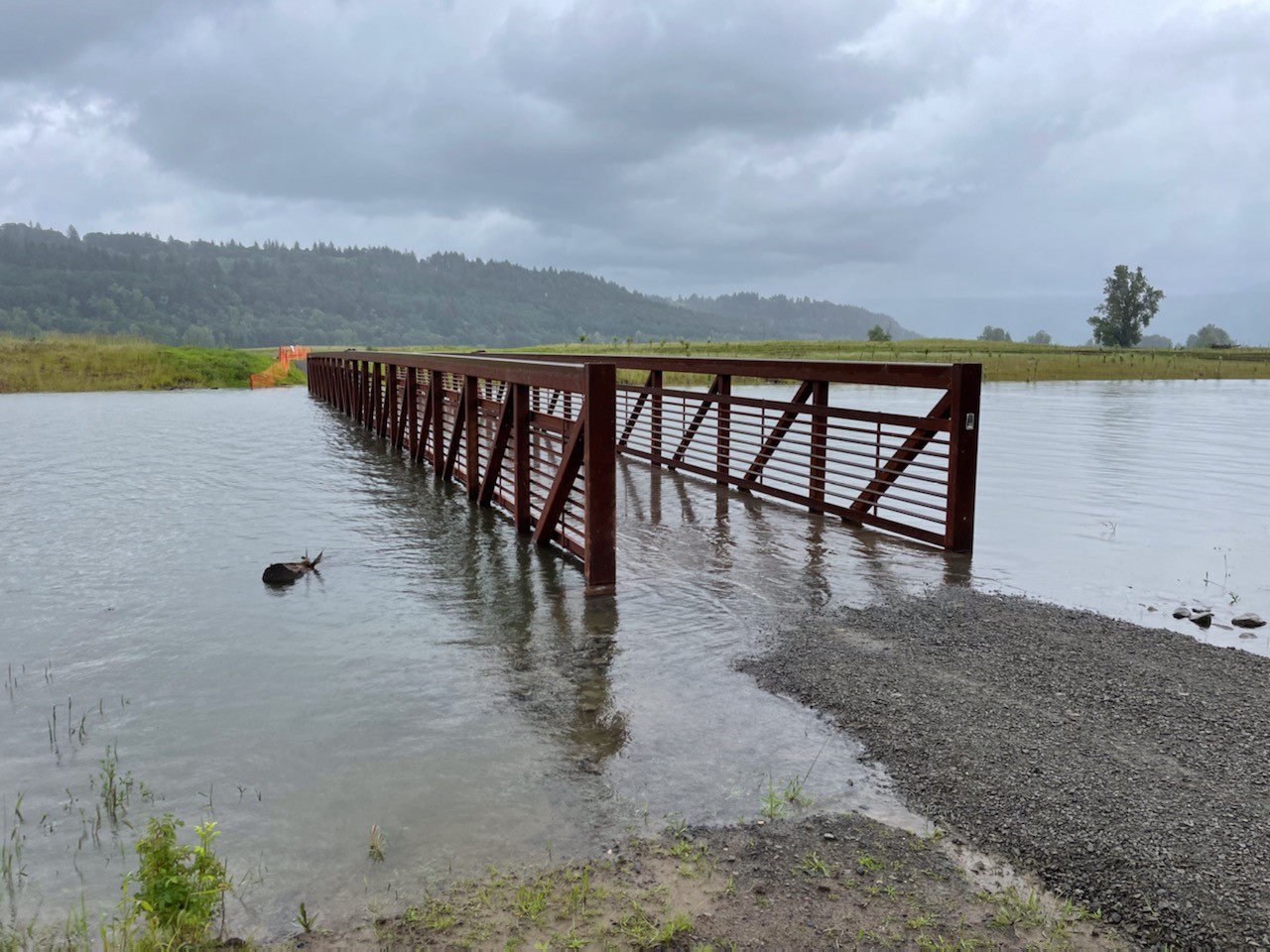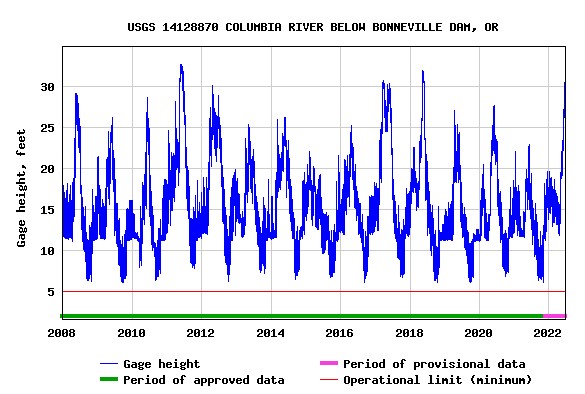For the first time in 60 years, the Steigerwald Lake National Wildlife Refuge floodplain was inundated by water from the Columbia River. From June 10-24th, the Columbia River below Bonneville Dam experienced a minor flood event. At times during this event, over 600 acres of the refuge was inundated by floodwaters, including small portions of the trail system and the Channel 3 bridge – though these features were designed to withstand occasional flooding.

This stretch of the Columbia River peaked at approximately its five-year flood stage level – an event that has a 20% chance of occurring each year. The last five-year flood event to occur on the Columbia River below Bonneville Dam was in 2018 (four years ago), when the river was at or above the five-year flood event level for 18 consecutive days. Interestingly, this stretch of river has reached or exceeded the five-year flood event level five times in the last 15 years; each event had a different duration – from one day in 2012 to nearly 5 weeks in 2011.

The recent flooding at Steigerwald did not impact the Port of Camas Washougal’s Industrial Park or nearby homes. The setback levees and floodwalls installed as part of the Steigerwald Reconnection Project protected this infrastructure while allowing floodwaters to naturally replenish the floodplain ecosystem at the refuge.
Many communities along the Columbia River experienced negative effects associated with the recent flood event. However, the flooding at Steigerwald is occurring as planned, and the project partners are neither alarmed nor worried. Actually, it’s a great test of the Steigerwald Reconnection Project. If there are corrections to be made, they can occur in August and early September when the refuge is temporarily closed for the final phase of trail construction and floodplain restoration.
The flooding at Steigerwald provides a variety of benefits:
-
Habitat for waterfowl, heron, and other bird species. Refuge staff have reported seeing many more waterfowl at the refuge than in years past; mainly mallards, cinnamon teal, and wood ducks.
-
It suppresses invasive species, such as reed canary grass and blackberry, and favors native wetlands plants. Over 500,000 flood-adapted trees and shrubs were planted at the refuge
-
Provides food-rich habitat for juvenile salmon away from the rushing current of the Columbia River.
-
Beavers love flooding. There is an increased amount of beaver activity throughout the refuge, including a new dam on Gibbons Creek.
After the waters recede, the Estuary Partnership encourages you to visit the refuge. It is a dynamic, constantly evolving natural floodplain ecosystem. The arrival of migratory birds traveling the Pacific Flyway, salmon returning to Gibbons Creek to spawn, floodwaters spilling in from the Columbia or Gibbons Creek, and warm summer months will all bring about new and exciting changes to the refuge.
And for those who want to continue to support the restoration of the refuge, please join the Estuary Partnership mailing list where volunteer opportunities are promoted. Next fall, the focus shifts to Campen Creek, a tributary of Gibbons Creek. The restoration and stormwater treatment projects on Campen Creek will further the goals of the Steigerwald Reconnection Project by reducing water temperatures and contaminants flowing into the refuge.